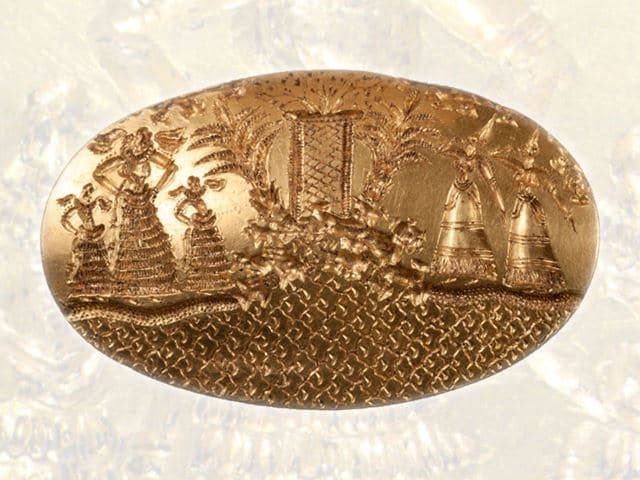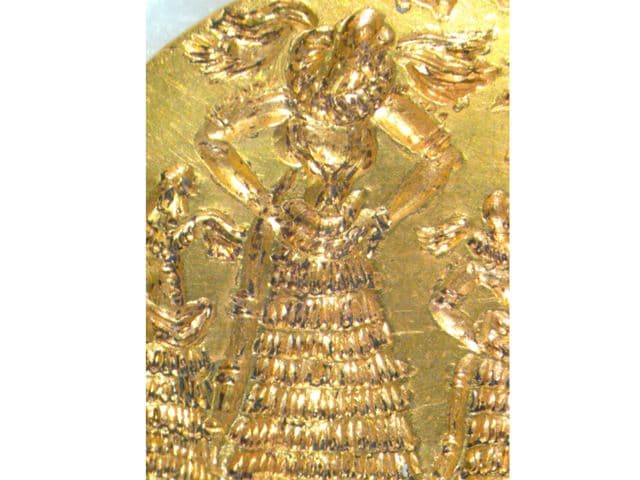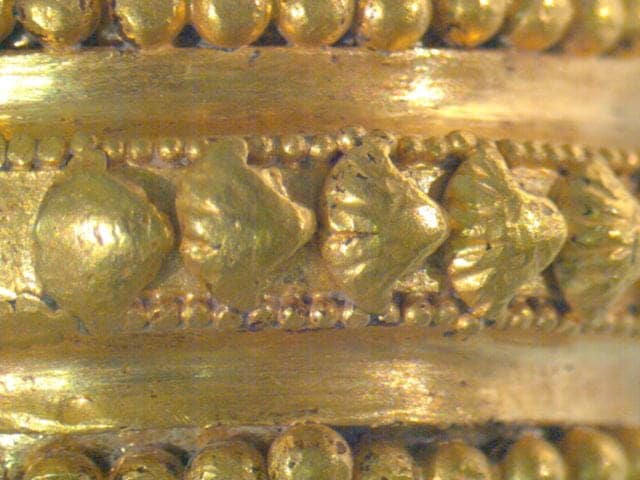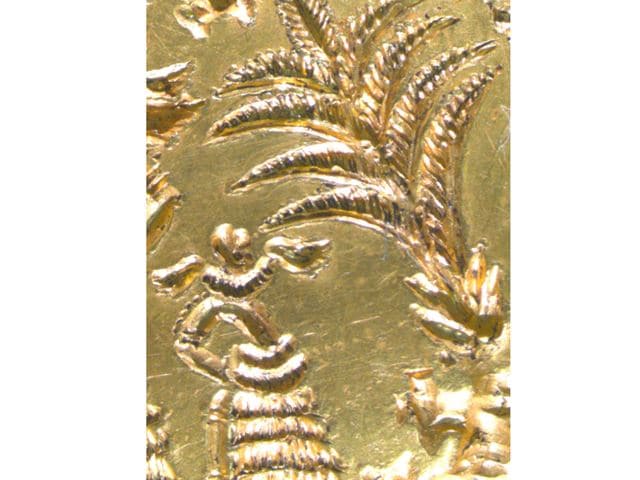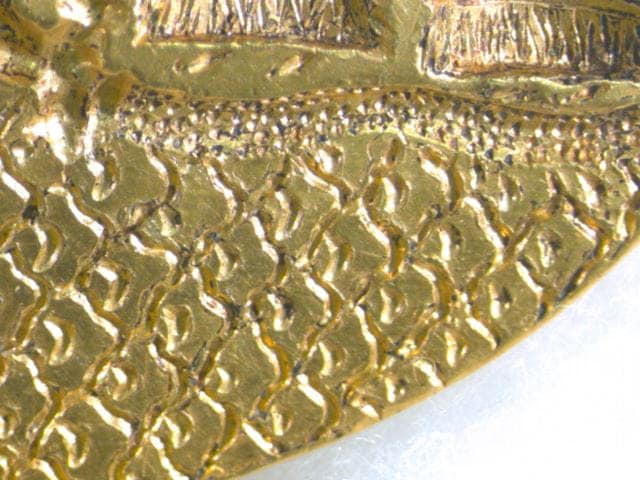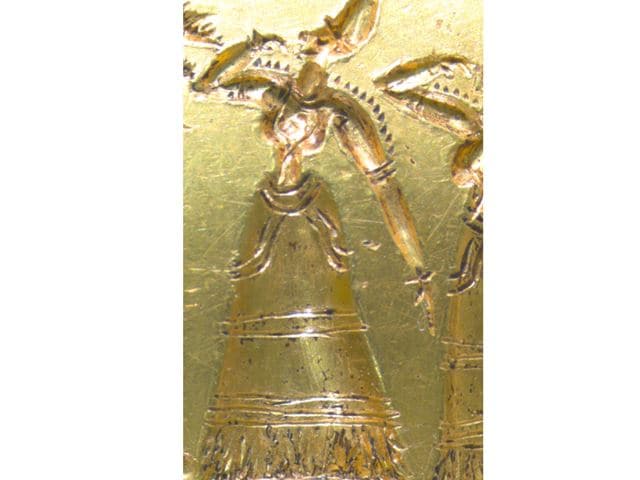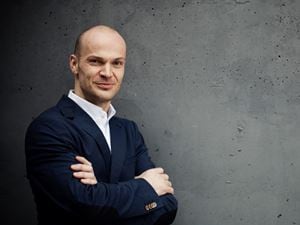RecommendMail Facebook LinkedIn
- Tech Talk
- Health & Science
- Digitization
Microscope images help archaeologists to solve the mystery of the Griffin Warrior treasures
Researchers from the University of Cincinnati have conducted an archaeological analysis of a gold signet ring from the “Griffin Warrior Tomb” – one of the 3,500-year-old artifacts from excavations carried out at the Palace of Nestor in Pylos. Microscope images taken with JENOPTIK GRYPHAX® cameras form the basis for the digital investigations of the artefacts recovered from a Bronze Age time capsule.
, Stefan SeidleinThe Palace of Nestor was described in Homer’s Odyssey and in the Greek myth of the Trojan horse and was an important administrative and political centre in the Mycenaean period. It is located in the ancient city of Pylos, on the southwest coast of Greece. In 2015, archaeologists from the University of Cincinnati made an exceptionally rich find at the Palace of Nestor. An initially inconspicuous rectangle made of stones revealed the marvelously intact tomb of a warrior from the Bronze Age.*
The tomb of the Mycenaean warrior is called the “Griffin Warrior Tomb” since, during the archaeological excavations – and in addition to numerous other artifacts – an ivory slab decorated with a mythical griffin was found. Of particular interest were four gold rings, as these were engraved with complex religious scenes.
We spoke with Kathryn Cook from the University of Cincinnati who is involved in the excavations as an archaeological conservator, particularly in the digital analysis of the largest of the four gold signet rings. For her investigations, she used the SUBRA microscope camera from the JENOPTIK GRYPHAX® series along with the software contained in the scope of delivery to create stunning microscope images.
Kathryn, what can you tell us about the spectacular find made by the archaeological team from the University of Cincinnati?
The Tomb of the Griffin Warrior is a small, stone-built tomb from the around 1450 BC. Hundreds of precious objects were buried with a single, male individual – a unique find unprecedented in the area. Among the metal vessels and weapons buried with the warrior, there were four gold signet rings. I undertook a detailed study of the gold finger ring depicting female figures flanking an altar. The ring is thought to depict a goddess with worshippers at a shrine by the sea.
What did the archaeological investigation of the largest of the four signet rings reveal?
A microscopic study of the ring reveals small details that are barely visible to the eye and provide insight into how the decorative elements of the ring were created. It also provides evidence of different tools and techniques used to create the images.
What challenges did you encounter when capturing microscope images of the archaeological find?
When imaging these rings, light could be a little tricky. The details are very delicate and small in some areas and can only be seen when lit from specific angles. Having adjustable microscope lights allowed us to change the position of the light source to provide raking light from different angles to help capture all the details in their entirety.
Which feature of the JENOPTIK GRYPHAX® software was particularly helpful for creating sharp microscope images?
Given the three dimensional element of the ring, using the Z-stacking tool was very handy, and allowed us to capture the full range of what was in the image in sharp focus. When working at the highest magnifications, this became even more useful.
The details of the image carved on the ring are so small that I'm not sure how we would have captured them without the use of the JENOPTIK GRYPHAX® microscope camera.
Can you give us a brief insight into the results of your archaeological investigations based on the microscope images taken with your SUBRA camera?
Yes, I would like to give you a brief overview of what we have discovered in our archaeological study based on the following microscope images taken with the SUBRA camera of the JENOPTIK GRYPHAX® series.
(Please see image gallery and captions below.)
Microscope images of the gold signet ring
Image captions
(Please find the assignment of the numbers to the images when clicking onto an image above to open the image gallery in full view.)
Image 1
The cultural legacy retrieved from the warrior’s grave also contained four gold signet rings. The largest of these four rings shows five sumptuously dressed women gathered around a shrine at the sea’s edge.
Image 2
Using the Z-stacking tool, this microscope image was captured showing the particulars of the carving of this figure, identified as the goddess in a worship scene, perhaps dancing with the young worshippers to either side of her.
Image 3
With the help of the Z-stacking tool, this microscope image was produced showing a series of shells flanked with two rows of beads decorating the outside of the band of the ring. The shells show a progressing pattern of wear, becoming increasingly worn smooth as they move towards a gap where a shell is missing entirely.
Image 4
This magnified microscope image shows carving details of the young worshipper and the palm tree next to her.
Image 5
Here the details of the carving are shown, indicating the use of different types of tools – one to carve the scallop net pattern representing the sea, the lines of which have a v-shape in profile, while another tool was used to create the round dots on the border between the sea and the ground representing the beach.
Image 6
In contrast to the goddess and dancers with complicated, layered skirts, these worshippers at the altar are presented more simply. This microscope image allows us to observe the details of the carved lines used to depict them and their clothing.
The images are used with the kind permission of Chronis Papanikolopoulos (image 1) and Kathryn Cook (images 2-6) from the Department of Classics University of Cincinnati.
Kathryn, what do you particularly like about your SUBRA camera and how important is the quality of microscope images in applications such as archaeology?
Our main requirement for a microscope camera was that it must have good resolution and be able to capture clear microscope images at high magnifications. A quality image that clearly and accurately portrays the details of interest on an object is necessary for an excavation in archaeology. Even small details can reveal key information and we need to be able to understand them.
Using the JENOPTIK GRYPHAX® camera and software is really easy and intuitive. It makes it easy to capture microscope images quickly and carry on working. The images produced are also very good – they are clear and sharp and show relevant archaeological details accurately. The ability to adjust various settings like light and color allow me to make minor adjustments if needed to make sure I have the best quality image.
This has been an exciting insight. Many thanks to Kathryn Cook, lead conservator for the Palace of Nestor Excavations.
Would you like to learn more about the aforementioned Z-stacking tool of the JENOPTIK GRYPHAX® software, Kathryn Cook used to create microscope images for her archaeological investigations? Take a look at our video.
Our JENOPTIK GRYPHAX® team will be happy to advise you about useful features that are available for your individual tasks – also in other application areas such as healthcare & life science or education. Please contact us!
With friendly support of the University of Cincinnati
*To find out more of the archaeological excavations, please read the following publication: “The Lord of the Gold Rings: The Griffin Warrior of Pylos” in The Journal of the American School of Classical Studies at Athens (HESPERIA)
Product Recommendation
About Stefan Seidlein
Stefan Seidlein has been working for Jenoptik since 2000 in various positions in the field of Digital Imaging. As product manager, he currently focuses on the light microscope camera product portfolio and brings his entire digital imaging competence and experience to projects. As a graduated technician with a focus on energy technology and process automation, he is fascinated by digitalization and the many opportunities it offers both individuals and Jenoptik.
